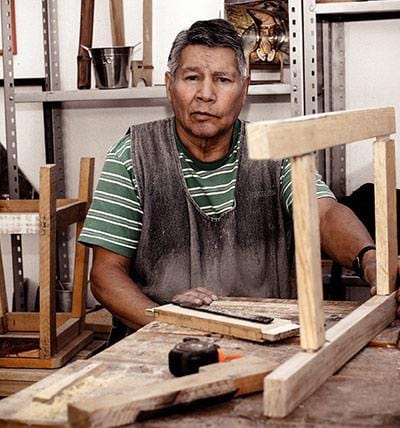We have all been there: You are having a dilemma about whether you should store the leftover hot soup in plastic bowls or wooden containers or not.
It is how they pack the food at the restaurants, right? We keep fruits and veggies in plastic container too.
So how bad could the plastic combined with the heat actually be? Read on to find out.
Should I Store Hot Leftovers Immediately After the Meal?
Storing hot leftovers is not recommended.
This is because the heat from the food can cause the plastic to warp and release toxins into the food.
Instead, allow the food to cool down before transferring it to a plastic container.
If you must store hot food in a plastic container, make sure to use one that is specifically designed for hot foods.
- Please pay attention to these things next time you want to store hot food:
- Make sure the plastic containers are from a safe material

- Don’t subject the hot food to extreme coldness (i.e. don’ place the hot plastic container into a freezer)
- Let the plastic containers cool down before storing them in the fridge or freezing them
- Make sure that the plastic container is heat-resistant
- Do not put the hot food directly into the container, allow it to cool slightly first
- Avoid using plastic wrap or plastic bags to store hot food, as they can melt and cause the food to become contaminated
Is It Bad to Put Hot Soup into Plastic Containers?
Plastic seems to be everywhere when it comes to food packaging. It's lightweight, durable, and easy to clean, making it a popular choice for both home and commercial kitchens. However, plastic can also leach chemicals into food, which can be harmful to our health. It's also very accessible and cheap, so it's no wonder that so many people rely on it to keep their food fresh. While there's no need to panic, it is important to be aware of the potential risks associated with plastic food storage. When possible, choose glass or stainless steel containers for your food. These materials are safe and won't leach chemicals into your food.

Is It Safe to Microwave Plastic Containers?
When microwaving food in plastic containers, there are a few things to keep in mind to avoid any potential health risks:
- The container should be labeled “microwave-safe” – if it’s not, don’t use it.
- Avoid microwaving food in plastic containers with dark colors, as this can cause the release of harmful chemicals.
- Never microwave plastic containers that are empty – this can cause them to catch fire.
- Always follow the manufacturer's instructions when microwaving food in plastic containers
The Food Storage Tips
Food that is not properly cooled can be a breeding ground for bacteria, which can cause food poisoning. This can happen to the food that is not cooked properly or that has been sitting out for too long. To avoid bacterial growth, be sure to warm up the meal to a temperature of at least 165 degrees Fahrenheit before eating. When storing warm food in a fridge, it should be placed in shallow containers on the top shelf.
Hot food needs to be stored properly to avoid spoiling and becoming dangerous. When storing hot food, be sure to use an insulated container to keep it at the proper temperature. Hot food should also be covered to prevent it from drying out. If you are not going to eat the hot food right away, be sure to refrigerate it within two hours.
- First, make sure the food is covered
- Second, put the food in a container that is safe to use in the microwave or oven
- Third, if you are storing the food in the fridge, make sure to put it in a container that won't leak
- Finally, don't forget to label the food so you know when it was cooked
Storing Alternatives
There are many different types of containers made of plastic. Some are designed for storing food, while others are meant for holding liquids. Some are clear, while others are opaque. No matter what the purpose, plastic containers are a convenient way to store items. One advantage of plastic containers is that they are typically lightweight. This makes them easy to transport from one place to another. They are also usually inexpensive, which makes them a good option for those on a budget. Another advantage of plastic containers is that they come in a variety of sizes.
This means that you can find one to fit your needs, whether you are storing a small amount of food or a large quantity of liquid. However, if you are concerned that plastic is not an ideal solution for storing your food, take a look at these alternatives:
Glass Containers
There are many different types of food glass containers available on the market today. Some are designed for storing dry goods, while others are better for liquids. There are also some that are specifically designed for freezing food. When it comes to storing food, glass is a great alternative to plastic. Glass is non-porous, so it won't absorb food odors or flavors. It's also easy to clean and doesn't retain bacteria as plastic does. Glass is also a more sustainable option than plastic, as it can be recycled over and over again. The key to storing hot food in a glass container is to use a container that is designed for hot food. These containers will have thicker glass and a stronger seal.
Wooden Containers
Wooden food containers are a great way to keep hot food hot and cold food cold. They are also a great way to keep food fresh and prevent it from drying out. Wooden food containers are made from a variety of woods, including cedar, maple, and oak. They are durable and can be used over and over again. They are also eco-friendly and biodegradable. Wooden food containers are a great alternative to plastic or paper containers.
Conclusion
You should know that plastic containers are usually safe and recyclable. BPA plastic is used in food and beverage containers and is considered safe for human use. Plastic is a material that is made from petroleum products and is widely used in many different industries.
It is also one of the most mass-produced materials in the world. It seems that everything comes packed in plastic, from the food to the children's toys. Though it is safe for most applications, there are some health and environmental concerns that need to be considered when using it. If you liked this topic or want to learn more, please comment below and we will be happy to get in touch with you!

FAQ
Can I store food in plastic containers and freeze it?
When it comes to storing food in plastic containers, it's important to make sure that the containers are clean and dry before you add any food to them.
Otherwise, the food can spoil or become contaminated. Once the containers are clean and dry, you can then add your food and seal the containers tightly.
Then, you can place the containers in the freezer, where the food will stay fresh for months. Just be sure to label the containers so you know what's inside them.
What is the best alternative to plastic containers?
There are many alternatives to plastic containers. Glass, wood, and paper are all good options. Glass is easy to clean and can be reused over and over again. Wood is also easy to clean and can be reused, but it is not as clear as glass. Paper is a good option for short-term storage, but it is not as durable as glass or metal.
When should I use paper bags for food?
Paper bags have a number of advantages over other food containers. They are lightweight and easy to carry, which makes them ideal for taking food on the go. They are also environmentally friendly, as they can be recycled or composted after use. Paper bags can be used for a variety of foods, including sandwiches, snacks, and even some hot foods.
ABOUT THE AUTHOR
Olivia Poglianich
Content Strategist
Olivia Poglianich is a nomadic brand strategist and copywriter in the wooden crafts and 3D product design space who has worked with brands such as Visa, Disney and Grey Goose. Her writing has taken her all over the world, from a Serbian music festival to a Malaysian art and culture event. Olivia is a graduate of Cornell University and is often writing or reading about travel, hospitality, the start-up ecosystem or career coaching. Her latest interests are at the intersection of web3 and communal living, both on and offline.






